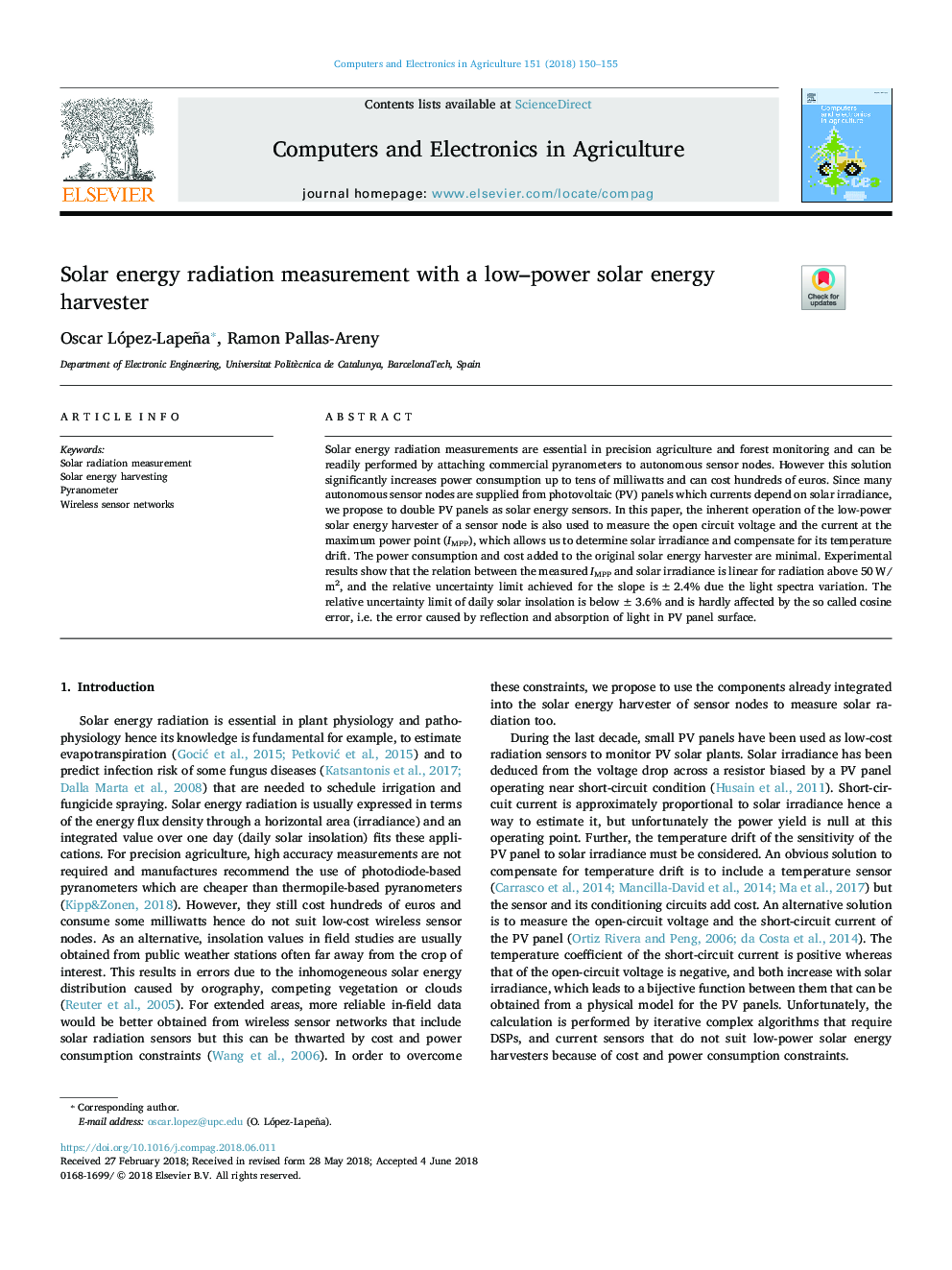| Article ID | Journal | Published Year | Pages | File Type |
|---|---|---|---|---|
| 6539333 | Computers and Electronics in Agriculture | 2018 | 6 Pages |
Abstract
Solar energy radiation measurements are essential in precision agriculture and forest monitoring and can be readily performed by attaching commercial pyranometers to autonomous sensor nodes. However this solution significantly increases power consumption up to tens of milliwatts and can cost hundreds of euros. Since many autonomous sensor nodes are supplied from photovoltaic (PV) panels which currents depend on solar irradiance, we propose to double PV panels as solar energy sensors. In this paper, the inherent operation of the low-power solar energy harvester of a sensor node is also used to measure the open circuit voltage and the current at the maximum power point (IMPP), which allows us to determine solar irradiance and compensate for its temperature drift. The power consumption and cost added to the original solar energy harvester are minimal. Experimental results show that the relation between the measured IMPP and solar irradiance is linear for radiation above 50â¯W/m2, and the relative uncertainty limit achieved for the slope is ±2.4% due the light spectra variation. The relative uncertainty limit of daily solar insolation is below ±3.6% and is hardly affected by the so called cosine error, i.e. the error caused by reflection and absorption of light in PV panel surface.
Related Topics
Physical Sciences and Engineering
Computer Science
Computer Science Applications
Authors
Oscar López-Lapeña, Ramon Pallas-Areny,
